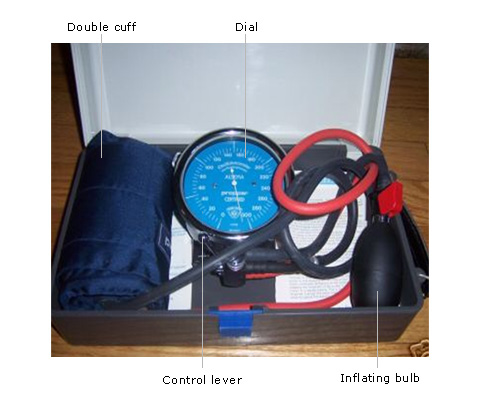Introduction
The oscillotonometric method of non-invasive blood pressure measurement uses a technique for sensing variations in pressure within the cuff associated with arterial pulsation. The pulsations within the artery are transmitted to the sensing cuff.
As in a manual sphygmomanometer, the cuff is initially inflated above the estimated systolic pressure. The cuff is then slowly deflated by releasing the bleed valve. When the pressure in the cuff just falls below the systolic pressure, partial opening of the artery results in onset of blood flow. The resulting pulsation within the artery is transmitted to the cuff. This results in a pressure change within the cuff, timed with arterial pulsation. These pressure changes are displayed on the aneroid gauge as oscillations.
